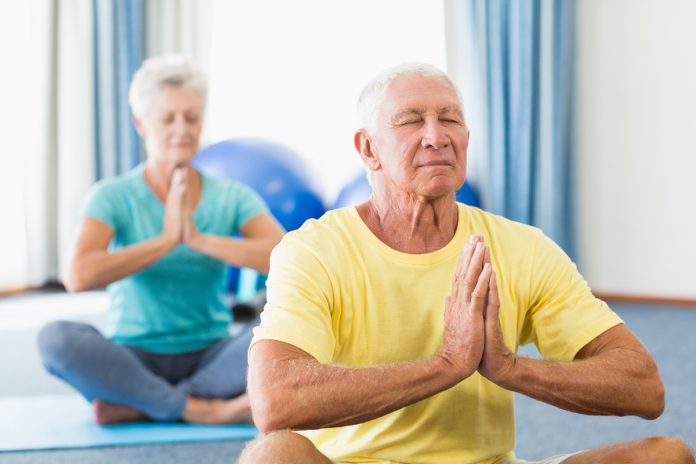Isabelle J. Dionne, Professor at Université deSherbrooke provides a compelling analysis of physical activity (PA) and ageing, focussing on how to develop recommendations that will translate into greater practice
Physical activity (PA) is a key behaviour in the determination of health and quality of life. Despite massive public health strategies and clear recommendations, physical inactivity remains elevated in developed countries. Increasing the levels of physical activity depends upon innovative and effective avenues of PA promotion.
Physical activity and ageing
The overall objective of the Canada Research Chair is to improve older adults’ quality of life and health by determining the best exercise modalities, accompanied or not by nutritional interventions, to prevent or delay T2D or disability (loss of physical function). Indeed, the ageing of the population and the greater prevalence of obesity at all ages leads to major health issues, among which Type 2 diabetes (T2D) and physical disability have important clinical implications. Both conditions could be prevented by the development of specific exercise recommendations.
While the Canadian Society for Exercise Physiology guidelines promotes a minimum of physical activity participation to improve health in the general population: they do not target precise medical conditions or affected populations who may benefit from more specific recommendations. Learning from exercise physiology and performance studies, we know that depending on the exercise type (aerobics, resistance), modalities (number of repetitions or duration of bouts) and intensity (percentage of maximum capacity – heart rate, maximum oxygen consumption, percentage of maximum strength), we can generate specific metabolic and functional adaptations. Hence, specific exercise recommendations could be developed to minimise the risk of developing diseases such as T2D or disability in older individuals who have been identified to be at risk.
Within the past 10 years, the Faculty of Physical Activity Sciences, together with the Research Centre on Aging, has developed a strong expertise in conducting large exercise trials with tight control of the intervention and a wide array of clinical areas, which is instrumental in developing exercise recommendations. Research in this area is especially timely since the high prevalence of physical inactivity and disuse in older adults has led to numerous health problems. In parallel, a surge of research on adherence to physical exercise in all populations focusses on making older adults, among others, to adopt an active lifestyle. It thus appears timely to intensify research not only on the importance of doing it but also on what to do based on the specific health needs of an individual.
The specific case of Type 2 diabetes
Type 2 diabetes (T2D) remains a major chronic disease in Canada and clinical practices need to be revisited for both prevention and management. For instance, gains in muscle mass are still promoted to be associated with improvements in insulin sensitivity. Nevertheless, we found that a small in size, but high-quality muscle mass seems beneficial to cardiovascular risk factors, such as blood lipids and glucose metabolism. Surprisingly, we even showed that during exercise, muscle mass loss was beneficial for insulin sensitivity, possibly through improvements in inflammation and quality. My work thus supports to explore creative strategies where weight loss would be accompanied by changes in muscle mass quality, instead of absolute gains and examine how it would impact metabolic impairments, especially those that will have been determined to increase the risk of T2D in older women with a family history of it.
On the other hand, the level of exercise remains low in adults with health risk and in diabetic patients. In our lab, older women tend to reduce exercise practice, even after having been supervised for several months and having experienced tangible benefits. We thus intend to extend exercise recommendations to the context of practice and recently began studying exercise adherence using more ecological approaches (i.e. living lab). For instance, my team and I have developed an interest in why people struggle with engagement and compliance in exercise programmes, despite wide education strategies. We thus conducted studies pertaining to personal and contextual factors of exercise practice to determine how to increase exercise programmes adherence and compliance over time. We determined that adherence to exercise programmes is greater outdoors than indoors, with equivalent physiological responses. These results are important because we also showed that current exercise participation is the best predictor of health in older adults, independent of past participation or not. These results allow refining recommendations, by adding key pieces of advice related to the context of exercise practice for older adults.
The need for interdisciplinarity research
In this context, the importance of interdisciplinary research has become evident. Numerous contemporary health problems can be blamed on physical inactivity (a level of physical activity of moderate and vigorous intensity that is below recommendations) and sedentarity (many sedentary activities such as TV watching, computer-based activities, reading, etc.). This applies to several populations (children, adults and elderly) in various contexts (leisure, school, working environment, long-term care facilities, etc.).
Altogether, these complex problems call for more comprehensive strategies supported by a large array of perspectives (physiological adaptations, contraindications, motivation, health education, etc.). Interdisciplinary research, in that sense, appears as one highly pertinent avenue. In this line, the Faculty of Physical Activity Sciences has recently launched the first Doctorate Program in Physical Activity Sciences that is interdisciplinary in nature. We are confident that this type of training will support the training of future researchers who are more open to addressing physical inactivity and its health complications through a wider spectrum of approaches and the most appropriate methodology.
The ultimate goal
Our research will inform clinical guidelines through creative exercise recommendations, both from a prescription (type, intensity) and contextual (setting, environment) standpoints. My research will improve exercise efficiency, adherence and maintenance, leading to a decreased overall risk of developing T2D and related disability, thus contributing to improve older women’s health.
Please note: this is a commercial profile
Isabelle J. Dionne
Professor
Université deSherbrooke
Tel: +1 (819) 821 8000 *63721











